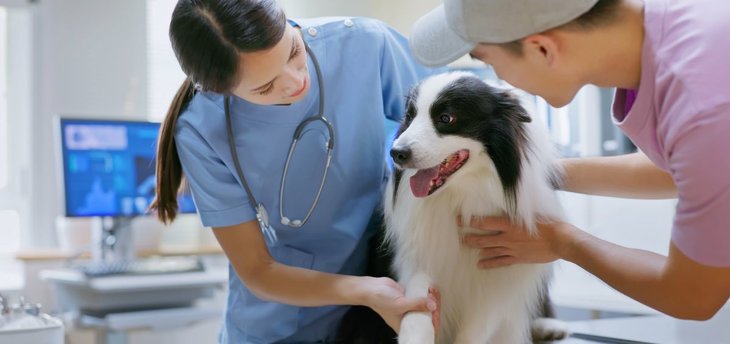Top 5 Communication Skills For Veterinarians
Associate Veterinarian, Speaker, Author - Penn-Ohio Veterinary Services and KMB Veterinary Media LLC
Communication is one of the most important skills needed to be a veterinarian. Numerous studies in both human and veterinary medicine have found that one of the leading reasons for board complaints and malpractice claims is poor communication. 1,2 Even the smartest, most confident doctor will fail if they can't communicate their recommendations clearly and compassionately.
If you've ever wondered what skills veterinarians need to be most effective at their jobs, here are five types of communication that you should master to improve your client interactions, enhance patient outcomes, and set yourself apart as a compassionate, trusted animal advocate.
Curiosity
While we are the medical experts in the exam room, our clients are the experts on their pets. They know when a behavior change has occurred or something is "off." It is our job as medical professionals to collect the information we need to determine what is happening in patients who can't speak for themselves.
Open-ended questions invite the client to provide more details than closed-ended questions and help us build the patient’s story. The answer to these questions requires more than a simple “yes” or “no.” They often begin with what, how, why, or tell me.
Open-ended questions invite the client to provide more details
Kate Boatright, VDM
While open-ended questions are important to obtaining a thorough history, they are perhaps most important when combined with the curiosity to understand the individual pet family’s goals and obstacles in their pet’s care. Identifying these items is essential when practicing a spectrum of care approach and helps to build relationships with clients.
Empathy
Empathy is one of the most important skills for communicating in veterinary medicine. Within caregiving professions, empathy contributes to enhanced patient satisfaction, decreased litigation, and increased adherence to medical recommendations, as well as facilitating patient trust and willingness to fully disclose pertinent information.3 Maintaining empathy while delivering a terminal diagnosis, poor prognosis, or discussing limited finances also helps improve outcomes.
There are several dimensions of empathy that we can experience:
- Cognitive empathy : Our ability to understand what our clients are feeling. This requires us to appreciate the situation and limitations a client is in and how they are responding. We can express cognitive empathy through statements starting with I can see, or It sounds like.
- Emotional empathy : Our ability to “feel along with” a person and experience some of the same emotions. While this can be a powerful connection with clients, we must balance the amount of energy we spend feeling the emotions of our clients, as this can become draining over time, especially with deep emotions
Listening
Once you’ve asked questions of the client, you must stop talking and listen to their response. In one study, the average time a veterinarian listened before interrupting the client was a mere 15.3 seconds.4 Interrupting a client may prevent them from sharing important information and send the signal that what they are saying isn’t considered valuable. Instead, by listening carefully to what is said by the client, we can ensure that we have the most accurate information and help the client feel that what they have to say is valued.
15.3 seconds
the average amount of time a veterinarian listens to a client before interrupting
There are two types of listening skills needed to be a veterinarian that are routinely utilized in the examination room, depending on the situation:
- Active listening: The listener demonstrates their engagement with what the speaker is saying through nonverbal cues such as nods, hand gestures, or brief statements such as “go on” during pauses by the speaker. This is best used after asking a client a question or when they are sharing their opinions or concerns about the diagnostic and treatment plans you have presented.
- Reflective listening: The listener demonstrates their understanding of what the speaker said by repeating back a paraphrased or summarized version of what the speaker said. This allows the listener to clarify that what they heard and understood was what the speaker intended. This is especially important when a client is presenting a history, to ensure that we are receiving the correct information.
Awareness of Terminology
When we speak, it’s wise to remember that many clients are not familiar with the medical terminology that comes naturally to us. If we want clients to adhere to our recommendations, we must be sure that we communicate them in a way the client understands. For instance, it is better to use the word “x-ray” when speaking to a client instead of “radiograph,” as most people will be more familiar with the former.
When presenting a diagnostic or treatment plan or delivering a diagnosis, be sure to monitor the client’s response — both verbal and nonverbal — to determine if they understand what you say. It can also be helpful to ask the client what questions they might have about what you’ve shared to ensure they have a chance to clarify anything that was unclear.
Nonverbal Communication
The words we say matter much less than how we say them as the vast majority of our communication is nonverbal. This includes our tone of voice, eye contact, hand gestures, and posture. It is essential that when we are listening to a client, explaining options, and expressing empathy, our nonverbal communication is in alignment with what we are saying. If we are trying to express empathy but staring at the floor instead of meeting the client’s eyes, the client is less likely to believe we truly understand how they are feeling.
Remaining aware of our clients’ nonverbal communication is another key veterinary skill that can help us determine if we are making and maintaining a connection with them throughout the appointment. We can interpret nonverbal cues to assess clients' understanding of what we have told them. For instance, if the client stops making eye contact, is fidgeting, or seems confused, we may need to stop and use open-ended questions to assess their understanding or redirect the conversation in a way that is beneficial to them and their pet.

Developing Communication Skills
The good news is that while some people have natural proficiencies in some of these veterinary skills, we can all learn and continue to develop them. There are many opportunities for communication training available for those who want to enhance their skills, such as FRANK communication training programs. 5
Veterinarians and their teams can also work on developing their communication skills in-house by observing each other communicate and providing feedback, videoing client communication for review, and utilizing communication exercises during staff meetings.
Knowing When to Outsource
While every veterinary team member should be comfortable with the communication skills needed to have successful client interactions, there are some times when it may be beneficial to outsource certain conversations to experts who are more experienced in the subject matter.
For instance, rare forms of cancer can be better communicated by a specialist in veterinary oncology, while a veterinary social worker may be more equipped to handle animal-assisted interventions. Or, if a client has questions about the best pet insurance plan for their pet, you can point them to Pawlicy Advisor for personalized recommendations from licensed insurance experts.
Pawlicy Advisor can communicate the value of pet insurance
We're the streamlined solution for pet insurance education recommended by the American Animal Hospital Association. Learn how our free tool can help increase enrollment in your practice to ensure your patients can receive the best care possible.
Final Thoughts
So, what skills do you need to become a veterinarian? While the question could be answered in several ways, most in the profession would agree that communication skills are paramount to best serve clients and patients. To that end, vets should strive to be curious, empathetic listeners, remember to choose language selectively, sharpen the delivery and perception of nonverbal cues, and seek outside support for topics that are beyond their expertise.
References:
- Russell E, Mossop L, Forbes E, et al (2022). Uncovering the ‘messy details’ of veterinary communication: An analysis of communication problems in cases of alleged professional negligence. Vet Rec , 00e1068. https://doi.org/10.1002/vetr.1068
- Douglas RN, Stephens LS, Poster KL, et al (2021). Communication failures contributing to patient injury in anesthesia malpractice claims. British Journal of Anesthesia , 127(3):470-478. https://doi.org/10.1016/j.bja.2021.05.030
- Yelland J., & Whittlestone, K. D. (2022). A call for compassionate empathy: Analysis of verbal empathic communication between veterinary students and veterinary clients and their dogs. JVME , 49 (1), 51–60. https://doi.org/10.3138/jvme-2020-0046
- Dysart LM, Coe JB, Adams CL (2011). Analysis of solicitation of client concerns in companion animal practice. JAVMA , 238(12):1609-15. https://pubmed.ncbi.nlm.nih.gov/21671816/
- Continuing Education - Veterinary Communication | CSU . (2023, May 30). Veterinary Communication for Professional Excellence. https://vetmedbiosci.colostate.edu/vcpe/continuing-education/
A Team Approach to Financial Conversations in Clinical Practice
Over the next several months, Dr. Boatright will explore ways to help reduce the stress of financial conversations and help to prepare pet owners for the costs of pet ownership — both expected and unexpected.
Do you want to find the best pet insurance?
Let's analyze your pet's breed, age, and location to find the right coverage and the best savings. Ready?
Analyze My PetAbout Pawlicy Advisor
The pet insurance marketplace endorsed by veterinarians, at Pawlicy Advisor we make buying the best pet insurance easier. By comparing personalized coverage and pricing differences we can save you a ton of money, up to 83% in some instances!
Instantly Compare Pet Insurance Plans
Guides
Determine If Pet Insurance Is Worth It
Comparison Charts
Find Your State
Dog Insurance
Associate Veterinarian, Speaker, Author - Penn-Ohio Veterinary Services and KMB Veterinary Media LLC
Dr. Kate Boatright, VMD, works as a small animal general practitioner, freelance speaker, and author in western Pennsylvania. Since graduating from the University of Pennsylvania with her veterinary degree in 2013, she has worked throughout Pennsylvania as both a general practice and emergency veterinarian. Both in the clinic and outside of it, Dr. Boatright enjoys building relationships with her clients and educating pet owners on how they can keep their pets as healthy as possible. She loves being a veterinarian and educating students and colleagues on wellness, communication, and the unique challenges facing recent graduates. Outside of the clinic, she is active in many veterinary organizations, enjoys running, watching movies, and playing games with her husband, son, and cats.
